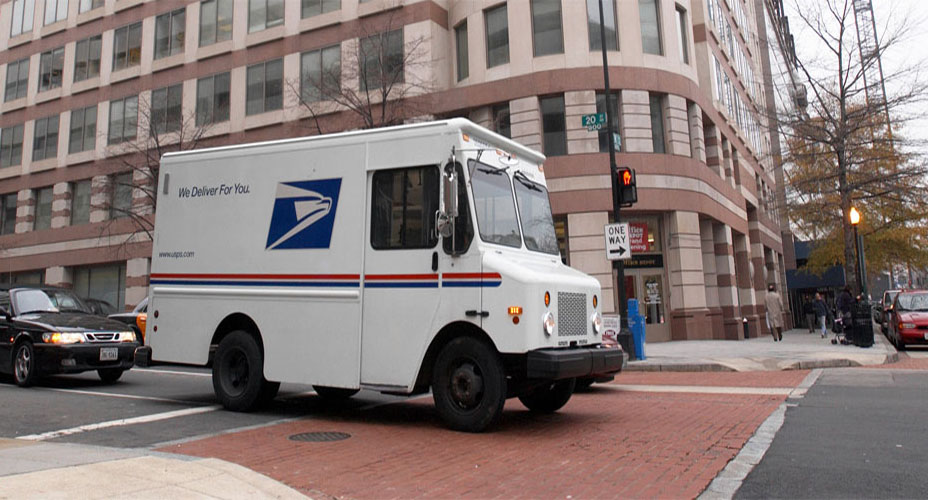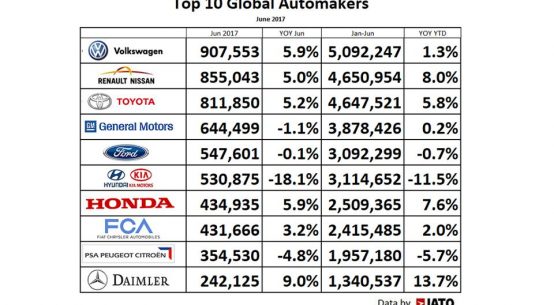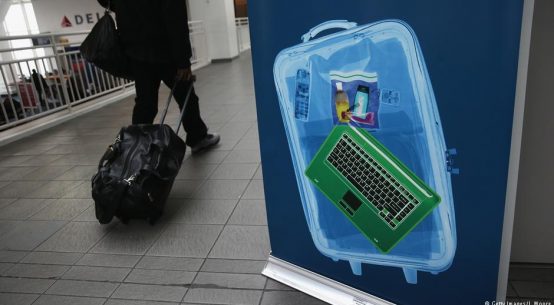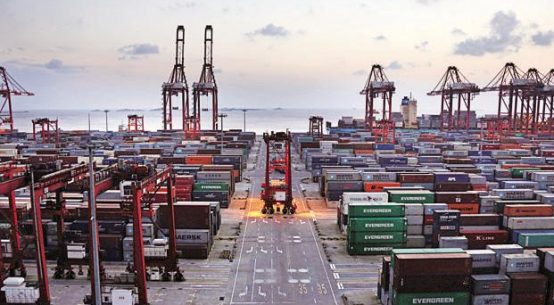
It seems like a straightforward question: Is the U.S. Postal Service making or losing money on its package delivery contract with Amazon — you know, the one President Trump can’t stop tweeting about? To answer it, all you need to do is start with the Postal Service’s revenue from Amazon, subtract all the expenses associated with delivering the Amazon packages and — voila! — you either get a positive number (a profit) or a negative one (a loss). Accounting 101.
As with most interesting questions, however, this one turns out to be more complicated than that.
For starters, other than Amazon and the Postal Service, almost nobody — including Trump — knows for sure what the revenue from the contract is. Analysts have estimated that Amazon uses the Postal Service for 40 percent of its shipping and that the per-package cost works out to roughly $2, or about half of the standard rate charged by other big shippers. One reason the Postal Service is willing to give Amazon such a big discount is the huge volume of deliveries that the contract guarantees — a key factor in business with high fixed costs. Another is that Amazon performs a fair amount of the shipping work itself, arranging the packages by Zip code and carrier route and dropping them off on pallets at one of 20 Postal Service distribution centers across the country. (Amazon founder and CEO Jeffrey P. Bezos owns The Washington Post.)

The trickier challenge, however, is figuring out what it costs the Postal Service to deliver those presorted packages from the distribution centers to millions of households and businesses.
If the Postal Service had set up a new, dedicated fleet of trucks and delivery personnel to work exclusively on the Amazon account, that would be a fairly easy number to come up with. And if that were the case, it’s a good bet that a contract charging $2 per package would be a money loser.
But that’s not what happened. When it sat down to negotiate its deal with Amazon, the Postal Service, in its role as the government-designated postal monopoly, was already required to stop by every home, business and rural post box six days a week, and already had the workforce and infrastructure to do that. In that context, the additional — or “incremental” — cost of delivering the additional Amazon packages would be much more modest. It might involve a few more trucks here and there, or the cost of buying slightly larger trucks than would otherwise have been needed. Perhaps additional delivery personnel would be necessary to accommodate the higher volumes Monday through Saturday. And there’s the extra overtime for providing the service on Sundays, which Amazon required. Looked at from the standpoint of incremental revenue (huge) minus these incremental expenses (modest), the Postal Service could very easily have come to the conclusion that, even at $2 a package, the Amazon contract was likely to be highly profitable.
So who is right? Is Amazon getting a sweetheart deal, as Trump protests, one that it could never have gotten from UPS or FedEx? Or, as the Postal Service contends, does the Amazon contract allow it to reduce its annual operating deficit and put itself on a more solid financial footing?
The answer, it turns out, is that both are right. In a very real sense, the arrangement is a win-win proposition, a great deal for both Amazon and the Postal Service.
Of course, we still haven’t exactly answered the larger accounting question, whether the Postal Service is making or losing money on the Amazon contract. Using short-term incremental accounting — incremental revenue minus incremental costs — the Amazon contract certainly looks profitable. But any enterprise that uses only short-term incremental accounting to price its products would, over the long run, probably find itself out of business. That’s because incremental cost accounting ignores the common costs (or what the Postal Service calls “institutional” costs) that can’t easily be attributed to any one customer or any one line of business — regular first-class “letter” mail, for example, or second-class newspapers and magazines, or third-class catalogues.
Indeed, under federal law, the Postal Service must not calculate only the incremental costs and revenue associated with any special contract or any of its lines of business when calculating costs. In setting rates, it must determine the full cost of providing the service by assigning an appropriate share of the common, or “institutional,” costs.
You could reason, for example, that since the postal worker was coming by my house to deliver a birthday card from Aunt Millie, it doesn’t add much cost for the postal worker to drop off a catalogue from Orvis and a paperback book from Amazon while he is there. But does that mean you should charge Aunt Millie the full cost of sending a postal worker to my house, while charging Orvis and Amazon only the incremental cost of adding their material to Aunt Millie’s delivery? Federal law says no — that in setting rates for Orvis and Amazon, the Postal Service should assign to them an appropriate share of the cost of the postman’s visit.
In the case of the Postal Service, these common, or “institutional,” costs are calculated to be quite high — 45 percent of all costs, according to a primer on postal costing issues put out by the agency’s Office of Inspector General. These costs include pensions, TV advertising, the salary of the postmaster general and a considerable amount of delivery costs — any expenses that do not change as the volume of mail rises or falls.
So how should these common costs be fairly shared and assigned to different contracts or lines of business? Should it be on the basis of the number of items delivered? Or by weight? By size? By the amount of revenue generated? Whatever method is chosen, inevitably it will be somewhat arbitrary, involving guesswork, averages, rules of thumb and plenty of subjective judgment.
With so much money at stake, you won’t be surprised to learn that there is a cottage industry of economists, accountants, lawyers and lobbyists in Washington who spend their days fighting over all this, along with the staffs of the Postal Service and the separate and independent Postal Regulatory Commission. Big companies that send out a lot of bills and catalogues, for example, are always arguing that their class of mail is assigned a too-high share of common costs, resulting in third-class postal rates that are too high. And then there are Federal Express and UPS, which make elaborate arguments about why too little of the common costs are assigned to package delivery, resulting in rates that are too low, allowing the Postal Service to steal business away from them.
Currently, the way the Postal Service calculates its package-delivery costs is to start with the incremental costs directly attributable with package delivery, and then add another 5.5 percent to cover common, or institutional, costs. Using that method, the Postal Regulatory Commission just last week found that special contracts such as Amazon’s generated $7 billion in profit for the Postal Service last year.
But a number of analysts, including more than a few hired by UPS and FedEx, have argued that the 5.5 percent common charge is ridiculously low, particularly now that package delivery has grown into a $20 billion a year business for the Postal Service, accounting for 28 percent of its total revenue. These critics argue that the common-cost surcharge on package delivery should be somewhere between 24 and 28 percent. Roughly speaking, that would add $1.50, on average, to the calculated cost for the Postal Service to deliver a package.
So what would happen if Trump got his way and the Postal Service was required to charge that much for a package? It’s a pretty good guess that the Postal Service would lose many of its biggest package delivery customers, including Amazon. And without that revenue, the Postal Service would lose a lot more money than it is already losing. That would force it to dramatically raise rates on Aunt Millie and Orvis, who would respond by mailing fewer birthday cards and catalogues. And in the end, what you would get would be a death spiral that eventually would force Congress to shut down the Postal Service and sell it off to the highest bidder.
For years, critics of the Postal Service argued that it should act more like a profit-making business. Now that it is, those same critics are arguing that it should be prevented from using pricing strategies routinely used by profit-making businesses and act more like a government agency.
The reality is that the modern Postal Service has been set up to be a hybrid — part government agency with a mission of universal service, part private enterprise with a mission not to lose money, overseen by an independent regulator whose job is to make sure that the two missions are held in proper balance. Unfortunately, that is a reality that is way too complicated for our president to understand.
- With reports from Washington Post
.










